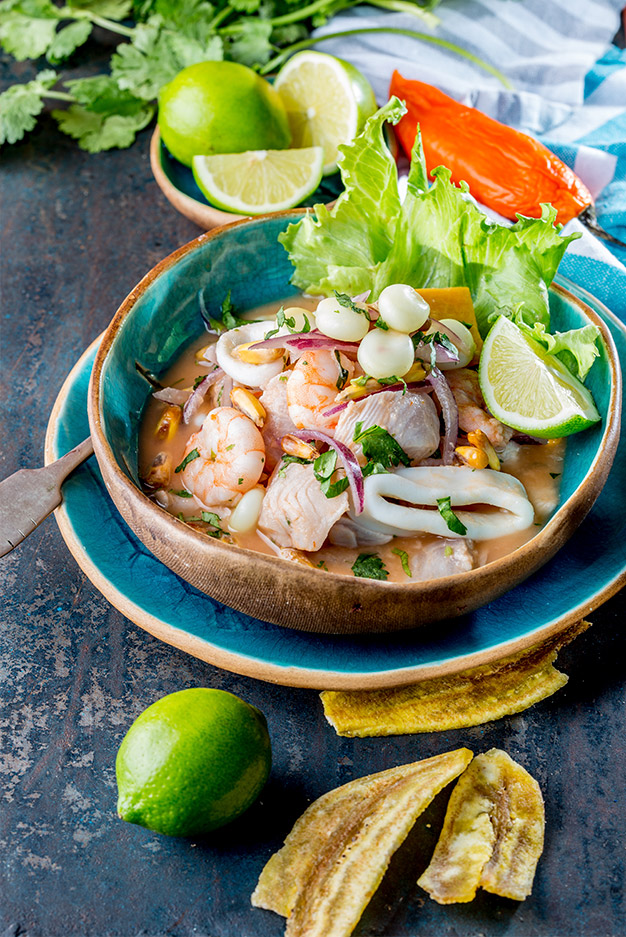Ceviche—it’s delicious, citrusy, refreshing, and exotic.
This Peruvian dish is internationally known for its bright flavors and elegant look. But ceviche tends to put off some chefs, who are uncertain about eating raw seafood, don’t know the best kind of fish for ceviche, or think the recipe must be too complicated to try. Luckily for you, we’re going to be busting all of those myths in this blog! Read on for a little more about ceviche (and why you should definitely give it a shot)!
Here’s what you should know about ceviche
You may see this dish spelled cebiche or seviche in classic recipes. No matter how it’s spelled, it’s definitely the best known Peruvian dish (and, in fact, Peru’s national dish). Today, variations of it are found in many coastal areas in Latin America. However, the simplest form of traditional ceviche calls for some specific ingredients, listed below.
Raw fish. Traditionally, Peruvian ceviche would include either shark or sea bass, which would have been caught fresh from the ocean. However, your favorite type of fish can work just as well here! Try mild white fishes like halibut, flounder, or grouper if you can’t get sea bass where you live.
Citrus. Traditional recipes call for lime juice, though you should feel free to experiment with fun flavors! The citrus juice actually cooks the fish without heat through a process called denaturing. Essentially, the acids interact with the chains of proteins in fish, which is what “cooks” the fish in the same way heating will. The final product is opaque fish meat with a firmer texture.
Chili pepper. Traditional recipes call for aji chilis, which grow throughout Peru. These peppers are hotter than most peppers we use in the kitchen: for reference, jalapenos are 2,500-8,000 on the Scoville scale, but aji peppers hit 40,000 or higher depending on the variety!
Onions. These aren’t part of the traditional recipe, but they’re pretty close, since the Spanish brought them to Peru around the same time as they brought limes. Onions can add some color and flavor and sweetness to the dish, and you can play around with the variety you prefer.
A ceviche recipe to get you started
Ready to dive in? Let’s start with the ingredients above.
Take your fish and chop it into pieces about ¼ inch in size. Chop the onion as well, and then combine it with the fish and lime juice in a glass container or bowl. Marinate the fish covered in the fridge for 3-4 hours, until the denaturation is complete and the fish doesn’t look raw when you tear it open.
Next, drain the lime juice away. Here’s where you can be creative if you’d like to go the non-traditional route: chop up any other (non-traditional) veggies you’d like—tomatoes, chiles, cilantro, olives, and more. Mix these with the fish and add salt. If you aren’t serving it immediately, you can cover it up and put it back in the fridge for later. I like to eat mine with a little avocado, fresh from the fridge!
This dish is a really fun way to bring some international flavors into your kitchen, and it’s also a classy but simple dish for weeknights (think about how hands-off it is!) or for beginner cooks. Pair it with a zesty and fruity wine to pair with the citrus, serve it with tostadas or chips, or garnish it with cilantro. No matter how you do it, everyone will be amazed by the tangy, flavorful meal. If you give this a shot, let me know!




